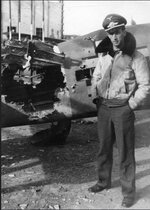GregP
Major
Very true but my point was how do you compare different countries manhour costs when we know nothing of how they are measured. Did Germany count how many hours slaves did before they were worked to death, did the Soviet Union count how many hours people in Gulags worked. Did Britain include the hours that went into a component that arrived free via Lend Lease.
No one seems to agree on how the hours were calculated by US accountants never mind how it was done in countries under occupation and bombing.
For figuring aircraft costs, the hours worked by a slave before death are irrelevant.
They aren't irrelevant morally and should never be so, but they are with regard to aircraft costs.
This didn't start out as a discussion of human condition, it was about aircraft costs. I'd rather keep it apolitical since there is no valid reason for what happened in WWII regarding slave labor.

